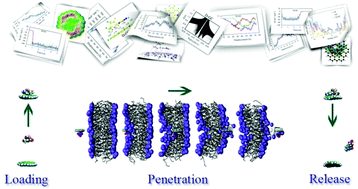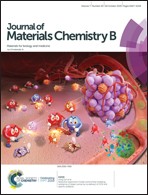Revealing the role of different nitrogen functionalities in the drug delivery performance of graphene quantum dots: a combined density functional theory and molecular dynamics approach†
Abstract
The amount and type of nitrogen (N) functionalities in graphene quantum dots can be controlled by tuning the synthesis conditions, which gives rise to their diverse applications. Nitrogen-doped graphene quantum dots (N-GQDs) are highly biocompatible and their properties can be easily tuned. In this work, the role of different N-functionalities in the drug delivery performance of N-GQDs was investigated via molecular dynamics (MD) simulations and density functional theory (DFT) calculations. The results indicated that the magnitude of binding energy between the gemcitabine (GC) drug and the central N-GQDs, i.e., graphitic, pyridinic and amido, was greater than that of pristine GQDs and edge N-GQDs. The quantum molecular descriptors revealed that adsorption of GC drug on the nanocarriers enhanced the chemical reactivity. The adsorption of the GC drug on the nanocarriers was spontaneously proceeded. However, the Gibbs free energy values for adsorption of the GC drug on the center N-GQDs were greater than those of pristine GQDs and edge N-GQDs. Also, the nature of the intermolecular interactions between the GC drug and nanocarriers was further investigated through quantum theory of atoms in molecules (QTAIM) and noncovalent interaction index (NCI). The simulation results demonstrated that the GC drug was loaded on the surface of all nanocarriers, while favorable drug release could occur only from the center N-GQDs in acidic environments of cancer tissues. Finally, the mechanism for the penetration of the drug-loaded nanocarriers across the cell membrane was studied and discussed via steered molecular dynamics (SMD). The results indicated that the force required to pull the drug-loaded nanocarriers was the smallest when the nanocarriers were penetrated perpendicularly rather than parallelly or obliquely into the membrane plane. Overall, the results suggested that the center N-GQDs had better performance in drug delivery than pristine GQDs and edge N-GQDs. Our findings offer insightful information on efficient utilization of N-GQDs as drug delivery systems.



 Please wait while we load your content...
Please wait while we load your content...